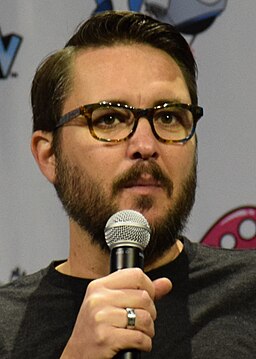Madeleine L’Engle Camp was born on November 29, 1918. She would be 105 today. You may know her name from her most famous book, “A Wrinkle in Time,” first published in 1962. The smart and awkward protagonist, Meg, was a beacon of hope for my adolescent self. It was not only okay to be smart and awkward, but that maybe smart, strange girls were just what the world needed to survive.
The New York Times article announcing L’Engle’s death in 2007, at 88, reported that “A Wrinkle in Time” was rejected by 26 publishers before Farrar, Strauss and Giroux accepted it. L’Engle had been ready to give up. In one of her memoirs, L’Engle wrote that a friend of the family set a meeting with editor John C. Farrar. L’Engle reluctantly agreed. Farrar read the manuscript for “A Wrinkle in Time” and said that he and the other editors loved it. They would publish it because they loved it, but they expected it might not do well — it was too strange. The following year, 1963, it was the best-selling children’s book and was awarded the Newbery Medal.
That news is both heartening and discouraging. The success of “A Wrinkle in Time” cracked open a genre that children and adults clambered to read. It could be argued that the popularity of the strange book was indicative of how badly this sort of story was needed.

Wil Wheaton (a former child star from Star Trek: The Next Generation, among other things) gave a poignant speech earlier this year. He covers a lot of points including how great libraries are (we love you, too, Wil Wheaton). You can read the entire text on his blog. He talked about how books in general, and science fiction and fantasy in particular, were so important to him when he was young. He was a child forced to continue acting and auditioning when he didn’t really want to. His life was scary for him, he felt powerless and lived with chronic anxiety and uncertainty. In contrast, the fantasy books he read provided a safe place for him to imagine a world where children had the power to fight injustice and control their own fates. Realistic fiction couldn’t contain the same degree of possibility. He knew that kids who tried to go against the system in his world, when he tried to go against the system, were all put back in their places.
How many other world-changing books were turned down around the same time as L’Engle’s “A Wrinkle in Time”? How many of the books that we need right now, but that don’t fit the current mold, are being turned down right now? How many authors give up too soon? What if L’Engle had given up, what would the juvenile section of the library look like?
If you open any of her works, which include memoirs, poetry, books on religion and of course fiction, it’s clear that L’Engle was a woman before her time but also of her time. Her stories and her memoirs are timeless. They were loved in her day, and today they read almost as if she had written them last week. If it’s been a while since you’ve read any L’Engle, I encourage you to pick up one of her books — they aren’t just for kids, and there’s more variety than you probably realize. I have to wonder if L’Engle had her own tesseract allowing her to travel through time. If she did, if she does, I hope she visits 2023 and maybe comes in the Columbia Public Library. Maybe she’s out there right now writing the next book to blow up our expectations. Or maybe she has already inspired the next generation of authors who will open our minds and hearts.
Image credit: Wil Wheaton at GalazyCon in Richmond in 2020, John Manard via Wikimedia Commons (license)



